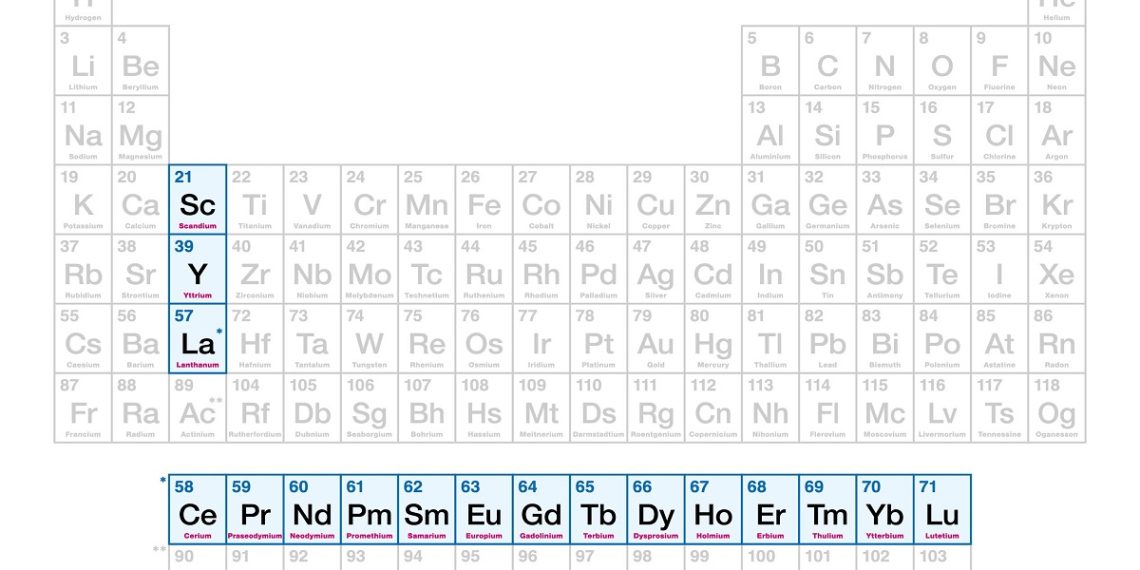While battery metals like lithium and copper have taken centre stage in the race to net-zero, investors are starting to look elsewhere, with more specialized elements now catching their eye, according to a report by S&P. These lesser-known materials like vanadium, manganese, scandium, and rare earth elements (REEs), pose their own unique challenges but are still highly necessary for many energy transition goals.
“These clean energy metals and minerals, many of them are actually very high-value commodities, commodities that don’t require big infrastructure,” said Vision Blue Resources co-founder, Andrew Trahar, to S&P.
“[They are] commodities that we can put on a truck and send down existing road infrastructure that doesn’t require multibillion-dollar projects and can be built for a few hundred million dollars of [capital] in much shorter periods of time.”
Lesser-known commodities such as silicon, tin, and graphite have all been pulled into Vision Blue’s portfolio. Prices for most critical minerals remain well above historical averages as supply struggles to catch up with demand, but these rare finds are different from their popular counterparts in more ways than one.
These materials are often denoted by their small quantities but high levels of concentration, they can also be disruptive to supply chains due to heavy reliance on a small number of suppliers.
Investors interested in these metals must take a risk by supporting relatively small, complex mining projects, while project developers rely on investors to help raise awareness about their niche products. Some of these materials are indispensable in making magnets for wind turbines or are a vital part of rechargeable batteries.
Recent events like the export restrictions on Chinese gallium and germanium in July have also highlighted the importance of these lesser-known critical minerals by further heightening concerns of nationalization and mineral politics.
Some 70% of natural flake graphite in 2022 was supplied from China, also the main producer of synthetic graphite and anode, according to IEA. They also produce 97% of battery-grade manganese sulphate and in 2022 and 2023, China remained the world’s largest producer and processor of REEs, accounting for 70% of production and 90% of processing.
Producers of these lesser-known materials, like rare earths, must educate many of their new investors. It can be tricky to invest directly in lesser-known energy transition minerals, as some are byproducts of other materials. Germanium, for example, is primarily produced as a byproduct of zinc. And even those familiar with mining can struggle to invest in these commodities, said Luisa Moreno, president of Vancouver, British Columbia-based Defense Metals Corp.
“Generally speaking, investors understand the geopolitical nightmare that we are in where China essentially controls the production and refining of many of the critical materials for the green agenda, whether that is rare earth or lithium,” Moreno said.
“Now what is very difficult for most investors, even for investors familiar with the resource space, is how to value a rare earth project.”
Most investors looking to invest in the energy transition struggle to get beyond the major battery metals such as lithium, nickel, copper, and cobalt, often mystified by the complexities of the other minerals.
Thras Moraitis, president and CEO of rare earth miner Serra Verde Mineracao Ltda., explained that the challenges in attracting traditional mining investors due to the unique nature of the industry.
Moraitis mentioned that rare earth mining is more akin to a chemical or industrial minerals business rather than a traditional mining business. This has historically deterred major mining investors, including the majors.
“We haven’t seen major institutional funds invest in this type of activity yet,” commented Moraitis. However, he believes that in time major institutional funds will start investing in this type of activity, saying, “I believe it’s kind of a matter of time.”
Serra Verde is focused on its preproduction-stage Serra Verde rare earths project in Brazil and is part of Vision Blue’s investment portfolio.
While not yet a buzzing trend among majors, some have waded into investing in the lesser-known materials. Perth-based South32 Ltd. (ASX: S32), for example, is expanding its manganese production, counting on the energy transition requiring a greater use of manganese-heavy batteries.
Overall, the risk of international minerals conflict is a possibility and investors are looking to new minerals to further diversify their portfolios, as well as to bolster these other increasingly important energy transition metals.












